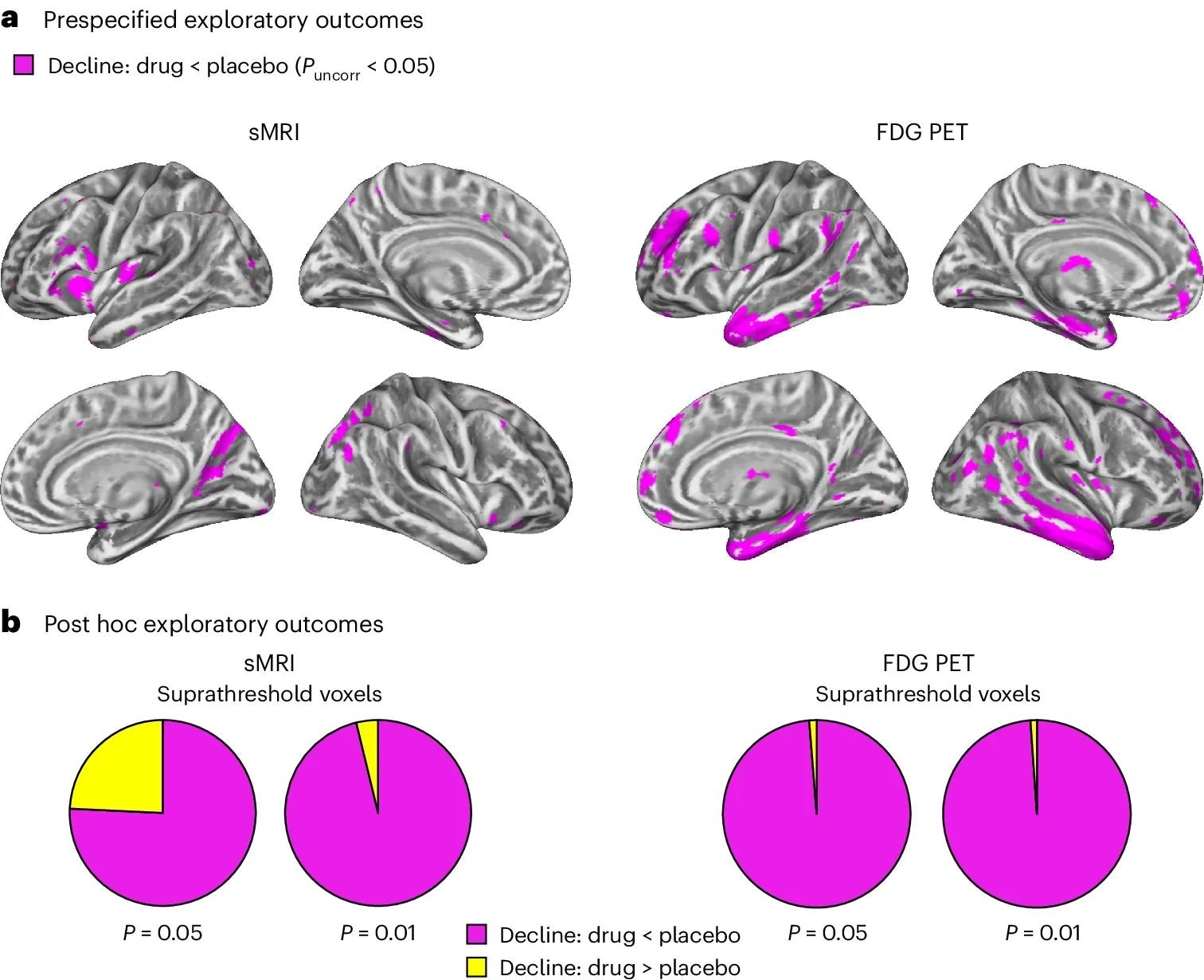Late-onset AD is the most common form of dementia, characterized by synaptic failure, degeneration, and loss. Although two primary AD medications target the buildup of abnormal amyloid-β or tau protein, they only address a subset of the pathophysiology. Another option is to focus on deep biology, which involves receptors and signaling networks that influence fundamental biological pathways. Preclinical studies show that modulating p75NTR with the first-in-class small chemical LM11A-31 reduces amyloid-induced and pathological tau-induced synapse loss.
 Study: p75 neurotrophin receptor modulation in mild to moderate Alzheimer disease: a randomized, placebo-controlled phase 2a trial. Image Credit: Burdun Iliya / Shutterstock
Study: p75 neurotrophin receptor modulation in mild to moderate Alzheimer disease: a randomized, placebo-controlled phase 2a trial. Image Credit: Burdun Iliya / Shutterstock
About the study
In the present randomized clinical trial, researchers investigated whether LM11A-31 could delay the progression of Alzheimer's disease by modulating p75NTR in humans.
The researchers administered oral capsules of LM11A-31 in 200 mg and 400 mg doses versus placebo in a 1:1:1 ratio to 242 mild-to-moderate Alzheimer's disease patients over 26 weeks. Participants had biologically confirmed Alzheimer's disease (cerebrospinal fluid (CSF) Amyloid β protein 42 (Aβ42) below 550 ng/l or Aβ42:Aβ40 ratio below 0.89) diagnosed using McKhann criteria, Mini-Mental State Examination (MMSE) scores between 18 and 26, Geriatric Depression Scale (GDS) scores below 5.0, modified Hachinski Ischemic Scale (HIS) scores ≤ 4.0, formal education for ≥8.0 years, and prior cognitive decline for ≥6.0 months.
Eligible individuals consumed acetylcholinesterase inhibitors (AChEIs) or partial N-methyl-D-aspartate (NMDA) receptor antagonists for ≥3.0 months before study initiation. They did not regularly consume prohibited medications such as neuroleptics, benzodiazepines, antiepileptics, sedatives, centrally active antihypertensive drugs, nootropic drugs (except ginkgo biloba), or opioid-containing analgesics.
The primary outcome was safety and tolerability, assessed using the Columbia Suicide Severity Rating Scale (C-SSRS), vital signs, blood pressure, and hematological parameters. The study used structural magnetic resonance imaging (sMRI), fluorodeoxyglucose-positron emission tomography (FDG-PET), and CSF biomarkers to assess secondary cognitive outcomes in Alzheimer's disease. AD indicators include tau phosphorylated at Thr181, total tau protein, Aβ40, Aβ42, and AChE activity. The team used a customized neuropsychological test battery to assess secondary cognitive outcomes at baseline, week 12, and week 26.
Secondary and exploratory outcomes included synaptic proteins [Synaptosomal-associated protein-25 (SNAP25), Synaptotagmin-1 (SYT1), and nucleoprotein (NG)], microglial proteins [soluble trigger receptor expressed on myeloid cells 2 (sTREM2)], astrocytic biomarkers (YKL40), and neurodegenerative biomarkers [Neurofilament light chain (NfL)]. The researchers also performed exploratory imaging tests, clinical evaluations, and a clinical global impression exam (CGI).
The team obtained CSF samples at screening and final visits to assess sTREM2 levels by immunoassays. They determined SNAP25 and SYT1 levels using immunoprecipitation-mass spectrometry (IP-MS), whereas NG was measured using an enzyme-linked immunosorbent assay (ELISA). Cognitive results comprised the global AD Assessment Scale-Cognitive Subscale (ADAS-Cog-13) and MMSE scores. Researchers investigated the effects of LM11A-31 therapy on gray matter integrity and glucose metabolism in AD-vulnerable brain areas, analyzing AD Neuroimaging Initiative (ADNI) participants selected based on age, MMSE score, and CSF Aβ42 abnormalities.
Results
The study found that LM11A-31 is safe and acceptable, with no serious safety concerns. Pervasive side effects include headache, diarrhea, eosinophilia, and nasopharyngitis, with gastrointestinal problems and eosinophilia being the most prevalent reasons for stopping. The 400-mg group saw greater medication discontinuations than the 200-mg and placebo groups. MRI found no concerns regarding medication safety, including amyloid-related imaging abnormalities. The team noted no significant differences in cognition assessments or amyloid-related imaging abnormalities between the two treatment groups. Longitudinal CSF changes, imaging region-of-interest studies, and cognitive tests showed no difference between the two dosing groups.
 a, Factorial mixed-effects analyses of covariance models examined the two-way interactions between treatment (drug or placebo) and time (before or after treatment). A one-sided t-contrast examining the hypothesis-consistent interaction (drug slowing progression over time relative to placebo) revealed that treatment with LM11A-31 slowed longitudinal degeneration (left panels) and glucose hypometabolism (right panels) in the drug group (sMRI, n = 127; PET, n = 121) compared to the placebo group (sMRI, n = 66; PET, n = 62). Voxels exhibiting this interaction effect are shown at an uncorrected P < 0.05 threshold (magenta) on a population-specific cortical surface. Left and right hemispheres are in the top and bottom rows, respectively. Brain areas exhibiting hypothesis-inconsistent interaction effects are displayed in Extended Data Fig. 7. b, The total number of voxels in the a priori AD vulnerability brain areas (total area of pie charts) exhibiting either a hypothesis-consistent (magenta) or a hypothesis-inconsistent (yellow) interaction in each imaging modality (sMRI, left panel; FDG PET, right panel) at increasingly liberal thresholds of uncorrected P < 0.01 and P < 0.05. Monte Carlo simulations determined that the ratios of voxels exhibiting hypothesis-consistent versus hypothesis-inconsistent effects were significantly higher than those observed on the basis of randomly simulated data for both sMRI and PET (P < 0.001 for each; two-sided).
a, Factorial mixed-effects analyses of covariance models examined the two-way interactions between treatment (drug or placebo) and time (before or after treatment). A one-sided t-contrast examining the hypothesis-consistent interaction (drug slowing progression over time relative to placebo) revealed that treatment with LM11A-31 slowed longitudinal degeneration (left panels) and glucose hypometabolism (right panels) in the drug group (sMRI, n = 127; PET, n = 121) compared to the placebo group (sMRI, n = 66; PET, n = 62). Voxels exhibiting this interaction effect are shown at an uncorrected P < 0.05 threshold (magenta) on a population-specific cortical surface. Left and right hemispheres are in the top and bottom rows, respectively. Brain areas exhibiting hypothesis-inconsistent interaction effects are displayed in Extended Data Fig. 7. b, The total number of voxels in the a priori AD vulnerability brain areas (total area of pie charts) exhibiting either a hypothesis-consistent (magenta) or a hypothesis-inconsistent (yellow) interaction in each imaging modality (sMRI, left panel; FDG PET, right panel) at increasingly liberal thresholds of uncorrected P < 0.01 and P < 0.05. Monte Carlo simulations determined that the ratios of voxels exhibiting hypothesis-consistent versus hypothesis-inconsistent effects were significantly higher than those observed on the basis of randomly simulated data for both sMRI and PET (P < 0.001 for each; two-sided).
LM11A-31 effectively reduced AD-related elevations in Aβ42 and CSF Aβ40 compared to the placebo group. It also demonstrated a decrease in the median yearly percent change in the presynaptic SNAP25 biomarker and a drop in the postsynaptic NG biomarker, indicating that LM11A-31 slows the course of presynaptic and postsynaptic loss. LM11A-31 also reduced longitudinal increases in YKL40, resulting in a drop in the MMSE and an increase in the ADAS-Cog-13. It also reduced gray matter loss in the frontal operculum and posterior parietal cortex and glucose metabolic decline in areas such as the entorhinal cortex, temporal cortex, hippocampus, insula, and prefrontal cortex.
The study concludes that targeting p75NTR with LM11A-31 is appropriate for larger-scale clinical studies. LM11A-31 met the primary safety endpoint and was tolerated well by mild to severe AD patients. The findings point to further studies with longer treatment durations to investigate the viability of small-molecule regulation of p75NTR as a disease-modifying therapy in AD. The study found that LM11A-31 profoundly affected several biomarkers, including CSF Aβ40, Aβ42, SNAP25, NG, and YKL40, indicating that it slows pathological development. Future human studies could evaluate additional glial status indicators.
Journal reference:
- Shanks, H.R.C., Chen, K., Reiman, E.M., et al., p75 neurotrophin receptor modulation in mild to moderate Alzheimer disease: a randomized, placebo-controlled phase 2a trial. Nat Med (2024), DOI: 10.1038/s41591-024-02977-w, https://www.nature.com/articles/s41591-024-02977-w